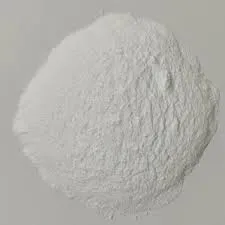The Role of Ornithine Aspartate in Managing Hepatic Encephalopathy
Hepatic encephalopathy (HE) is a complex neuropsychiatric disorder that arises as a consequence of liver failure. It is characterized by a spectrum of neurological abnormalities, ranging from subtle cognitive dysfunction to severe alterations in consciousness and coma. The pathophysiology of HE is multifactorial, primarily linked to the accumulation of neurotoxins—particularly ammonia—due to impaired hepatic detoxification. One of the therapeutic interventions explored in managing HE involves the use of ornithine aspartate (OA), a compound with promising effects on ammonia metabolism.
Ornithine aspartate is a dipeptide that is primarily involved in the urea cycle, which is responsible for the detoxification of ammonia. In patients with liver dysfunction, the efficiency of this cycle is compromised, leading to elevated ammonia levels in the bloodstream. OA works by facilitating the conversion of ammonia to urea, thereby enhancing its excretion and reducing its neurotoxic effects. The administration of OA has been shown to improve both the metabolic status of patients and their neurological symptoms.
Clinical studies have investigated the efficacy of OA in various stages of hepatic encephalopathy. Evidence suggests that OA can significantly reduce ammonia levels, which correlates with improvements in cognitive function and overall clinical status. In a randomized controlled trial involving patients with different grades of HE, those treated with OA exhibited marked reductions in both ammonia levels and symptoms of encephalopathy compared to placebo groups. These findings underscore the importance of OA in enhancing metabolic pathways that are often impaired in liver disease.
ornithine aspartate in hepatic encephalopathy

The mechanism of action of OA involves several key processes. Firstly, OA serves as a nitrogen scavenger, allowing for the detoxification of ammonia through the formation of glutamine. This process not only aids in ammonia removal but also promotes the regeneration of neurotransmitters that are critical for maintaining cognitive function. Additionally, OA may exert beneficial effects by stimulating hepatic blood flow and promoting the synthesis of urea, further reducing ammonia levels in circulation.
Moreover, the safety profile of ornithine aspartate is favorable, making it an attractive therapeutic option. It is generally well-tolerated with minimal side effects, which is a significant consideration given the vulnerabilities of patients with advanced liver disease. The simplicity of administration—typically as an oral supplement or intravenous infusion—further adds to its practicality in clinical settings.
Despite the positive findings, the use of OA for HE is not without challenges. One of the primary considerations is the need for early intervention; as HE progresses, the potential for recovery diminishes. Therefore, the timely diagnosis and treatment initiation are crucial. Additionally, while OA can mitigate symptoms and lower ammonia levels, it is not a cure for the underlying liver dysfunction. Thus, OA should be part of a comprehensive management plan that includes monitoring liver function, addressing precipitating factors of HE, and considering other therapeutic modalities.
In conclusion, ornithine aspartate represents a promising therapeutic strategy for managing hepatic encephalopathy. Its ability to enhance ammonia clearance and improve neurological outcomes highlights its role in the complex management of liver disease. Future research should focus on optimizing treatment protocols and further elucidating the mechanisms by which OA exerts its effects. As our understanding of HE continues to evolve, integrative approaches involving OA and other therapeutic strategies will be crucial in improving the quality of life for patients suffering from this debilitating condition. By harnessing the potential of compounds like ornithine aspartate, clinicians can strive to alleviate the burdens of hepatic encephalopathy and offer hope to those affected by liver disease.

